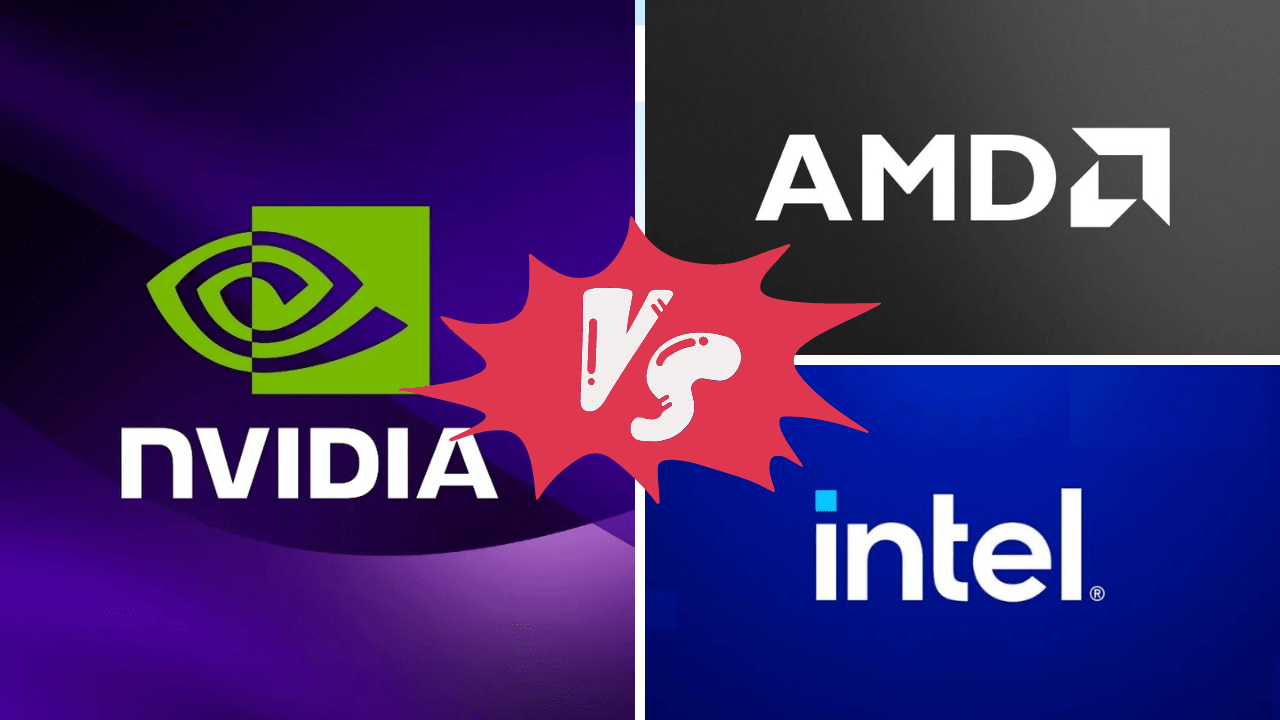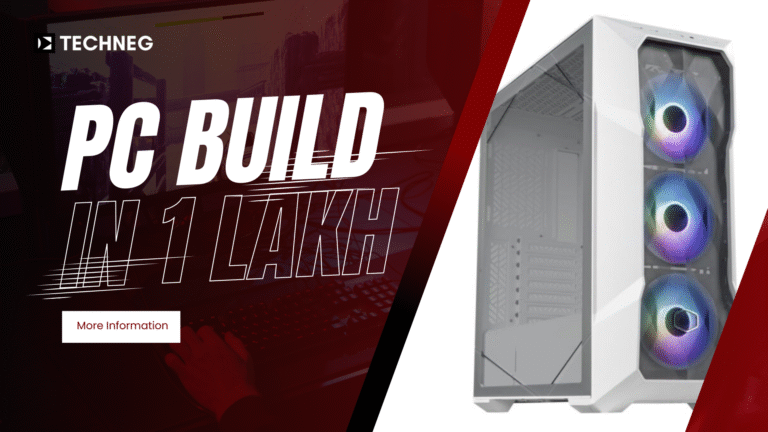Nvidia RTX 4090, AMD RX7900 XTX, and Intel ARC A770: A Comparative Analysis

Graphics cards are one of the most critical components of a contemporary computer. They are in charge of rendering visuals on the screen, and their performance may have a considerable influence on games, video editing software, and other graphics-intensive programmes.
In recent years, two major competitors have dominated the graphics card market: Nvidia, AMD and Intel. Both firms provide a diverse selection of graphics cards, ranging from entry-level models to high-end flagships.
This article will compare and contrast Nvidia, AMD and Intel graphics cards. We will consider pricing, performance, power consumption, and features. When providing suggestions, we will also take into account the demands of various sorts of consumers.
So, whether you’re a gamer, a video editor, or just want to get the most out of your computer’s graphics capabilities, keep reading for our in-depth comparison of Nvidia, AMD vs Intel graphics cards.
Nvidia Graphics Cards Lineup

The RTX series outperforms the GTX series, especially in games that enable ray tracing and DLSS. The RTX 40 series is Nvidia’s most recent generation of graphics cards, and it delivers the highest performance of any Nvidia graphics card to date.
The cost of Nvidia graphics cards varies based on the model and market circumstances. Nvidia graphics cards, on the other hand, are often more costly than AMD graphics cards.
AMD Graphics Cards Lineup

AMD offers a wide range of Graphics cards for Workstations, Desktops, and Laptops, offering different levels of performance required by respective devices for multiple tasks requiring high graphics processing.
Intel Graphics Cards Lineup

Intel provides a wide selection of graphics cards for workstations, desktops, and laptops, each with a distinct level of performance required by the device for many jobs that demand high graphics processing. Although Intel’s GPU is new in the market and hence requires more benchmarking in different conditions to access the actual performance.
We will look at the comparison between Desktop Graphics Cards offered by both Intel and AMD respectively. For the comparison, we will be taking the latest and highest configured GPUs offered by both brands.
Intel Vs Nvidia Vs AMD - Desktop Graphics Card
Specifications/ Price - Intel Arc A770 Vs AMD RX 7900XTX and Nvidia RTX 4090
Price / Specification - Comparison of Arc A770, AMD Radeon RX7900XTX, Nvidia GeForce RTX 4090
As you can see, the most costly GPU is the Nvidia GeForce RTX 4090, followed by the AMD Radeon RX7900XTX. The Intel Arc A770 is the least expensive of the three GPUs.
The Nvidia GeForce RTX 4090 features the most CUDA cores and VRAM, as you can see. It also has the fastest boost clock. The AMD Radeon RX7900XTX has fewer CUDA cores than the Nvidia GeForce RTX 4090 but the same amount of VRAM. Although it has the fewest CUDA cores and the least amount of VRAM, the Intel Arc A770 is nevertheless a capable GPU.
Finally, the optimal GPU for you will be determined by your budget and gaming requirements. If you want the highest performance possible, the Nvidia GeForce RTX 4090 is the way to go. However, if you are on a tight budget, the Intel Arc A770 is an excellent choice.
Performance - Comparison of Intel Arc A770, AMD Radeon RX7900XTX, Nvidia GeForce RTX 4090
source: Progamingreview
As you can see, the AMD RX7900XTX and Nvidia RTX 4090 are both high-end graphics cards with exceptional gaming and ray-tracing capabilities. The Intel ARC A770 is a less expensive choice that nevertheless delivers decent performance, particularly at 1080p and 1440p HD.
Finally, the greatest graphics card for you will be determined by your budget and requirements. If you want the highest performance for gaming and ray tracing, the AMD RX7900XTX or Nvidia RTX 4090 are the best choices. If you’re searching for a less expensive solution that yet delivers outstanding performance, the Intel ARC A770 is a good option.
source: videocardbenchmark
As you can see, the AMD RX7900XTX and Nvidia RTX 4090 outperform the Intel ARC A770 in most benchmarks. The Intel ARC A770, on the other hand, is a decent graphics card, especially at 1080p and 1440p resolutions.
It is crucial to remember that these are only a few benchmarks and actual graphics card performance may vary based on the game and the settings utilised. These benchmarks, however, should give you a good understanding of the performance differences between the three graphics cards.
Power Consumption - Comparison of Intel Arc A770, AMD Radeon RX7900XTX, Nvidia GeForce RTX 4090
GPU | Power Consumption | PSU (Recommended) | |
|---|---|---|---|
Intel ARC A770 | 225W | 500W | |
AMD Radeon RX7900 XTX | 355W | 650W | |
Nvidia RTX 4090 | 450W | 750W | |
The Nvidia GeForce RTX 4090 consumes the most power, followed by the AMD Radeon RX7900 XTX and the Intel ARC A770, as shown. The power consumption of a graphics card will influence the size of the power supply unit (PSU) that you require, therefore keep this in mind when selecting a graphics card.
Nvidia GeForce RTX 4090: The most power-hungry graphics card, with a TGP of 450W, is the Nvidia GeForce RTX 4090. This means that you’ll need a high-quality power supply with at least 750W of output to power this card.
AMD Radeon RX7900 XTX: With a TGP of 355W, the AMD Radeon RX7900 XTX consumes somewhat less power than the RTX 4090. This implies you can get away with a lesser power supply, but you should still strive for at least 650W.
Intel ARC A770: With a TGP of 225W, this is the most power-efficient graphics card of the three. This implies that you can operate this card on a lower power supply with at least 500W of output power.
Summery of the Comparison
RTX 4090 | RX7900 XTX | ARC A770 | |
|---|---|---|---|
Price | ✓ | ||
Performance | ✓ | ||
Power (Less Consumption means less performance) | ✓ | ||
Feature | ✓ |
Additional information on Graphics Cards
Future of Graphics Cards
Graphics cards have a promising future. Graphics cards are becoming more powerful and capable as new technologies such as ray tracing and artificial intelligence are developed. This is resulting in a new breed of aesthetically spectacular and engrossing games and applications unlike any other.
Trends in the GPU industry showing a promising future for the GPU market:
Performance has improved: Graphics cards are growing more powerful, with new generations providing considerable performance gains. The development of new manufacturing technologies, such as 7nm and 5nm, which allow for more transistors to be crammed into a smaller space, is driving this.
Innovative technology: Graphics cards are also embracing new technologies like ray tracing and artificial intelligence to make games and apps more visually appealing and engaging. Ray tracing is a technique that models the behavior of light in real life, and artificial intelligence is being applied to improve image quality and performance.
Power usage is more efficient: Graphics cards are getting more efficient, which benefits both gamers and companies. This is being pushed by the development of more power-efficient designs and manufacturing techniques.
Price reductions: Graphics card prices are falling, making them more affordable to gamers and companies. This is being driven by increased competition in the graphics card industry and the development of new cost-effective manufacturing technologies.
How the GPUs are being used in the future:
Different types of graphics cards available
Gaming cards are intended for high-end gaming: They usually contain a large number of CUDA cores (Nvidia) or stream processors (AMD), allowing them to generate graphics significantly quicker than integrated graphics. In addition, gaming cards often have greater memory than integrated graphics, which is necessary for storing high-resolution textures.
Workstation cards are intended for professional applications requiring a significant amount of graphics processing power, such as video editing, 3D rendering, and CAD. Workstation cards often feature more CUDA cores or stream processors than gaming cards, as well as more memory.
Integrated Cards: The motherboard incorporates integrated graphics, which share system memory with the CPU. They are not as powerful as specialised graphics cards, but they are enough for simple activities like web surfing, word processing, and video playback.
Mini-PC graphics cards are intended for tiny form factor PCs. They are often less powerful than full-sized graphics cards, but they are still a viable alternative for gaming or professional applications on tiny form factor PCs.
About the Author
Ajay Kumar
Administrator
Ajay Kumar is an experienced author and the founder of Techneg.co.in, a platform dedicated to providing insightful content on technology

Ajay Kumar is an experienced author and the founder of Techneg.co.in, a platform dedicated to providing insightful content on technology






